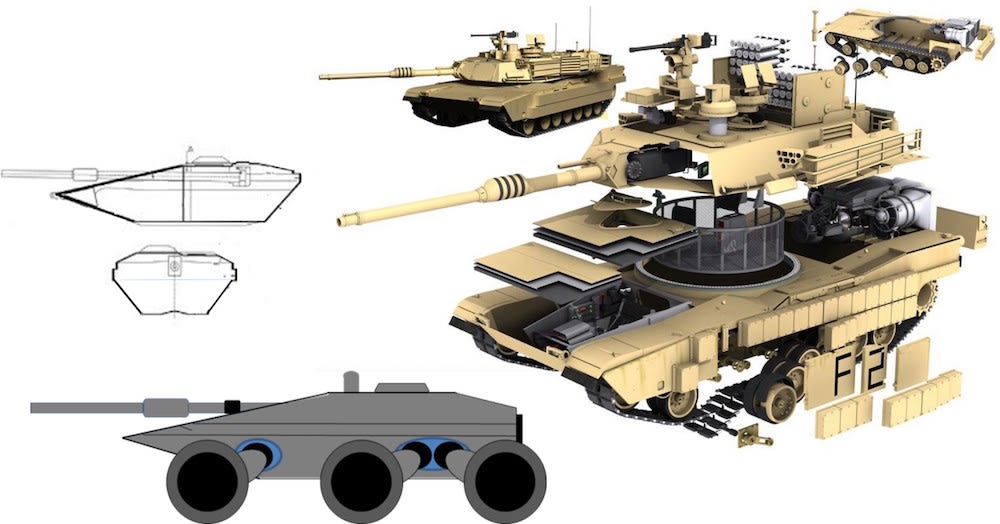This light tank concept provides effective and affordable defense for nations which cannot maintain fleets of 60 to 70 ton vehicles with huge logistic support requirements and destroys the paradigm that lethal vehicles are heavy vehicles. The Expeditionary Gun System (EGS) integrates a 105mm cannon directly into a semi-autonomous wheeled vehicle eliminating the rotating turret by harnessing the same suspension characteristics which provide extreme mobility to aim, control and stabilize the gun. This sixteen-ton design eliminates weight, complexity, cost, and armor volume; reduces fuel consumption and crew size; while providing lethality unavailable in its weight class.
Robotics, onboard sensors, crew augmentation, and precision firepower allow the two operators to take greater risks closing with the enemy or protecting populations, forcing a potential enemy to reveal hostile intent. The EGS can support forced entry operations by providing the ability to air drop a fully operational vehicle controlled from a remote, protected, location. This is a capability the US Army has been looking to fulfill for 30 years. The result is a lightweight, lethal, and survivable vehicle with exceptional tactical and strategic mobility.
The heart of this hybrid electric vehicle is a modular suspension system which accommodates the extremes of terrain via active wheel technology and articulating road arms. The active wheels include in-hub electric motors, brakes, suspension, and steering in independent modules. Road arms provide additional damping when needed, raise or extend the wheels in extreme terrain, and counter gun firing shock. The suspension elements react to changing terrain and anticipate and control the firing of the main gun. The independent suspension modules allow the vehicle to raise, lower, tilt, or lean, and the extendable road arms provide steering at each wheel approaching 90°.
This concept combines commercial automotive providers for robotics, suspension, vehicle structure, and powertrain with existing weapons and ammunition to simplify manufacturing and lower costs. Advances in low recoil guns allow larger weapons in lighter vehicle structures. Hull placement allows greater recoil length to reduce shock effects and eliminate a muzzle brake. Robotics allow radical weight reduction and the complete re-definition of protection in a vehicle with strategic mobility. A magazine fed autoloader provides the ability to engage targets from bunkers to main battle tanks in a light and transportable design.
The ability of onboard crew to dismount to fight the EGS allows the vehicle to maneuver in ways and at speeds which would be otherwise impossible. Frontal armor sloped to 70° protects against 30mm weapons, but overall survivability is based on the ability of the vehicle to avoid detection and engagement via agility and low silhouette. Most tank engagements (65%) occur above the two-meter line which would pass over the top of the EGS.
This hybrid electric vehicle design combines agility, lethality, endurance, and stealth with weight reduction approaching an order of magnitude over today’s Main Battle Tanks mounting similar large caliber direct fire weapons. The unexpected appearance of a semi-autonomous platoon or company “swarm” of these vehicles could rapidly change the equation on any battlefield.
Like this entry?
-
About the Entrant
- Name:Joseph Riolo
- Type of entry:individual
- Software used for this entry:Pro/Engineer
- Patent status:none

